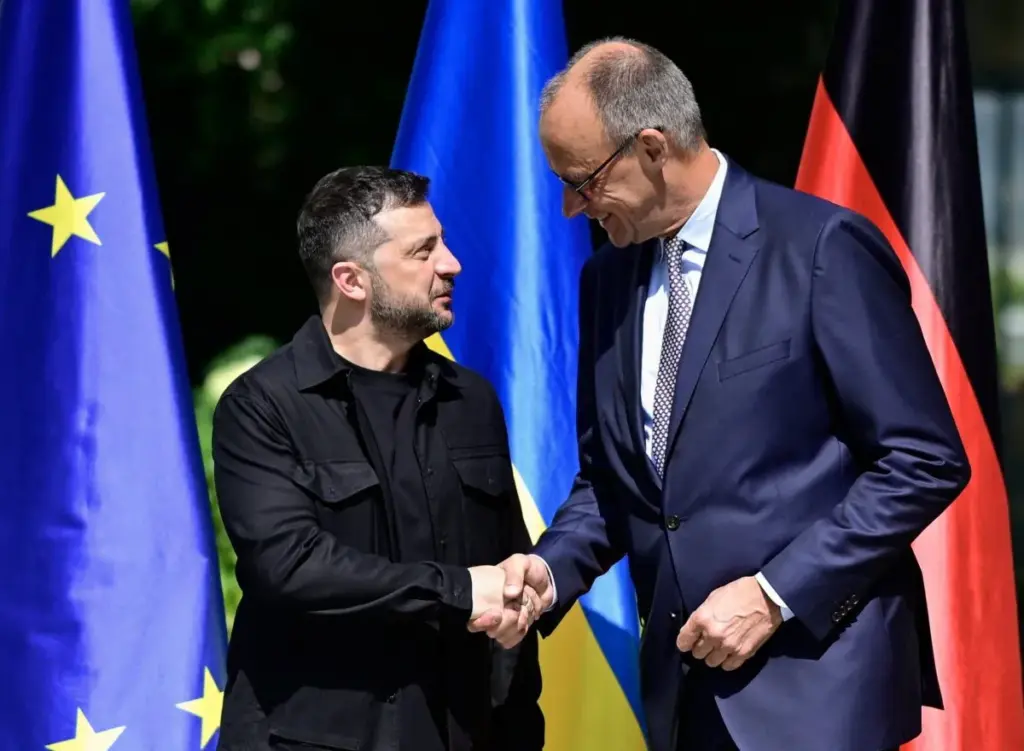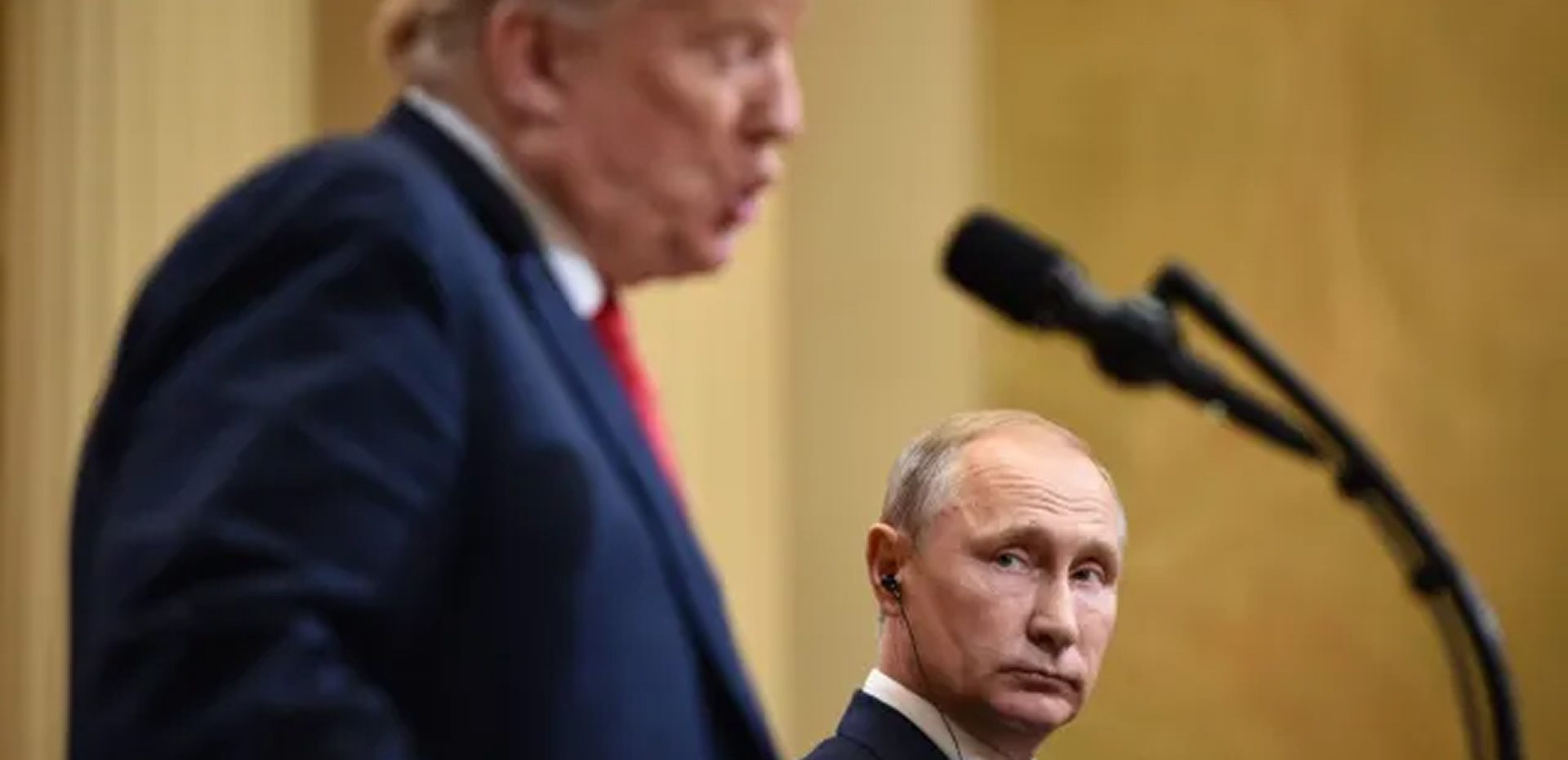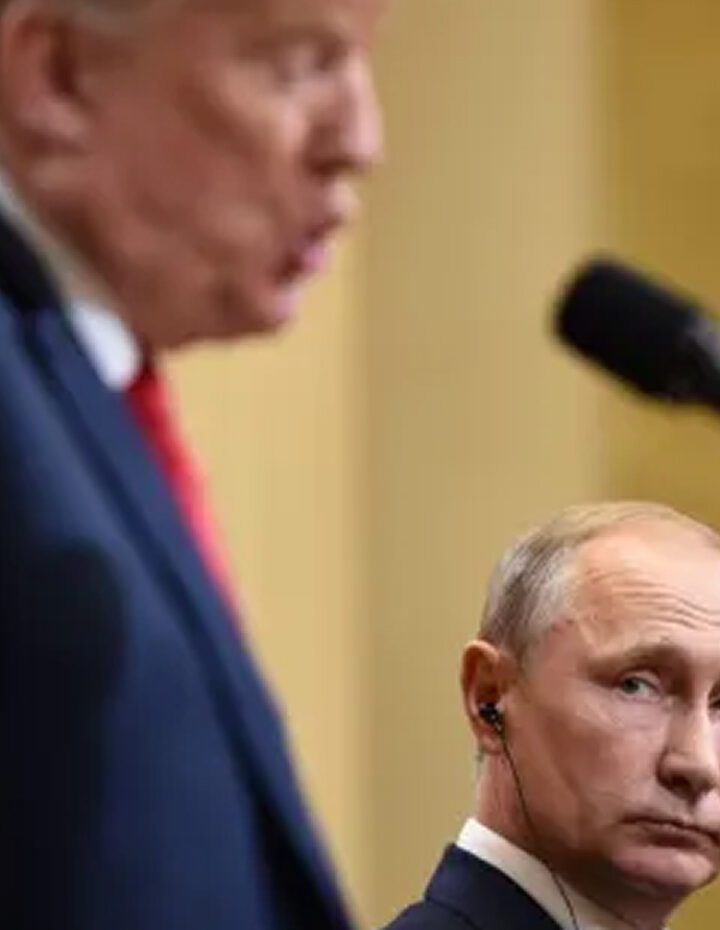Donald Trump has a taste for high-stakes diplomacy. By inviting Vladimir Putin to Alaska, he is betting that he can persuade the Russian leader to stop the war by agreeing to partition Ukraine.
Trump believes that Putin went to war to seize territory in Ukraine and return it to Russia. This interpretation confuses means and ends. Putin’s goal is to destroy Ukraine’s independence and force Ukrainians to accept that they are part of a “Greater Russia”. Capturing territory is just one tool for achieving this outcome.
Trump’s fixation on territory is perhaps understandable in view of his background as a real-estate developer. He spoke this week about his intention to return “oceanfront property” to Ukraine, in what appears to be a reference to Ukrainian seaboard territory seized by the Russian Army after the start of the full-scale war in 2022.
His golf buddy and fellow real-estate mogul turned diplomatic fixer, Steve Witkoff, who has no background in diplomacy, let alone Russian affairs, returned from his visit to the Kremlin last week with the idea that Putin had agreed to the principle of “land swaps”. There has been speculation that he misunderstood the Russian position when in fact Putin was talking about Ukraine surrendering territory in return for a ceasefire.
Not surprisingly, the idea of Moscow and Washington discussing changes to Ukraine’s borders over the heads of Ukrainians has conjured up visions in Europe of 1938 and the dismemberment of Czechoslovakia. The fear in Kyiv and other European capitals is that Putin and Trump could agree terms to end the war that are not acceptable to Ukraine, and then blame Kyiv for obstructing the peace process.
If Washington were to side with Moscow in this case, the consequences would be grave. The US would most likely pull its remaining military support for Ukraine, including vitally needed intelligence support, and hand over the problem to Europe. This would further weaken already the US’s fraying commitment to Nato and leave Europe facing the challenge of containing Russia’s military might without American protection.
In several respects, this would be a dream scenario for Putin and open the path for him to subjugate Ukraine and redesign European security arrangements without a US counterbalance.
Helped by his disregard for the principle of the inviolability of borders, as evidenced by his approach to Greenland, Trump has voiced what Volodymyr Zelensky and Ukraine’s European allies have been reluctant to address openly. Since Kyiv does not have the capacity to win back the territory that it has lost to Russia after the annexation of Crimea in 2014, a peace settlement is going to require Ukraine to accept de facto that its borders have changed.

Of course, de facto borders are not the same as those recognised de jure. Yet by breaking the taboo on changing borders by force that has been at the core of European security arrangements for the past 50 years, Trump has cleared the path for a practical discussion about the division of Ukraine.
Trump believes that this is a vital first step to establishing whether Putin is genuinely interested in negotiating a peace settlement or would prefer to carry on fighting to achieve his objectives.
Whether Trump’s primary interest is winning a Nobel Peace Prize or ending the war in Ukraine, his problem is that he is in a hurry and Putin is not. The Russian army is grinding its way forward across large sections of the 1,000km front. Although it continues to suffer casualties of 30,000 a month, it is still able to replenish its ranks by offering generous payments to contract soldiers.
By contrast, Ukraine’s manpower problems are steadily becoming more acute, and the decision by the Trump administration to stop using US taxpayer dollars to support Kyiv’s war effort is starting to place it under further strain. Ukraine’s increasing vulnerability to air attack, as Russia steps up its drone warfare, is a problem that cannot be resolved quickly and leaves it at the risk of further destruction of its critical infrastructure.
Even if the Russian economy is suffering from a combination of sanctions pressure and the expense of diverting resources to fight the war, it has enough resilience to continue for longer than Ukraine. While there is rumoured to be unhappiness among the Russian elites about how long the war has lasted and what it has achieved, there are no signs of open disagreement with Putin’s policy. The machinery of repression works effectively and has also silenced society.
Yet Putin has an interest in finding a negotiated settlement that can spare him the need to continue fighting to achieve his goals. He and his generals are keen to create the impression that Russia is winning the war and that the Russian army’s numerical superiority means that it is just a matter of time before Ukraine’s defences collapse. However, Ukraine’s stubborn resistance continues, and the front line is not expected to move significantly over the coming months.
In any case, driving deeper into Ukraine and capturing a major city would probably require further mobilisation of reservists, a move that the Kremlin knows would be unpopular. As much as the Kremlin laughs off the impact of sanctions, it also wants them lifted because they are holding the economy back and making it increasingly dependent on China.
Putin is a highly experienced negotiator who will draw on his KGB training to exploit what he sees as Trump’s weaknesses, notably his susceptibility to flattery and his lack of interest in details. He has some ground to make up because Trump has started to become frustrated by the Putin’s refusal to follow through on their “nice” conversations and show that he is committed to the peace process offered to him by the US. Yet, as Zelensky has shown, Trump can be forgiving. After their spectacular public bust-up in February, they quickly managed to patch up relations.
The White House is working hard to contain expectations of Friday’s meeting in Alaska. While the presidential dialogue is not going to deliver a peace deal, there is a good chance that it will strengthen the outline of what an eventual settlement will look like. Neither side wants to see the talks fail.
Originally published in The i Paper.


